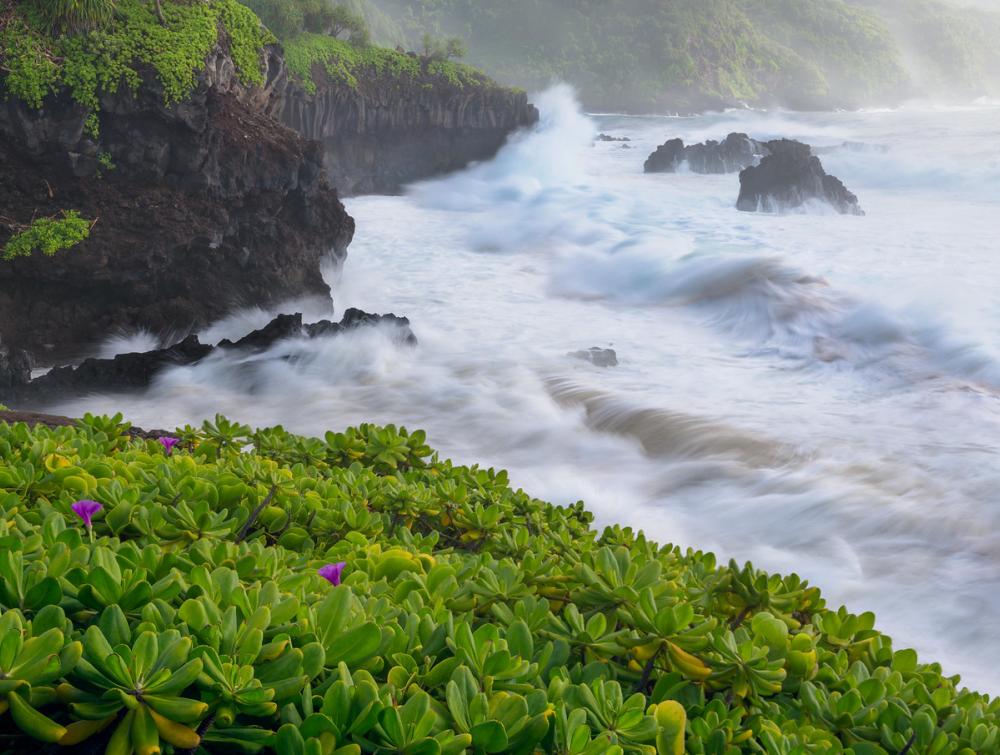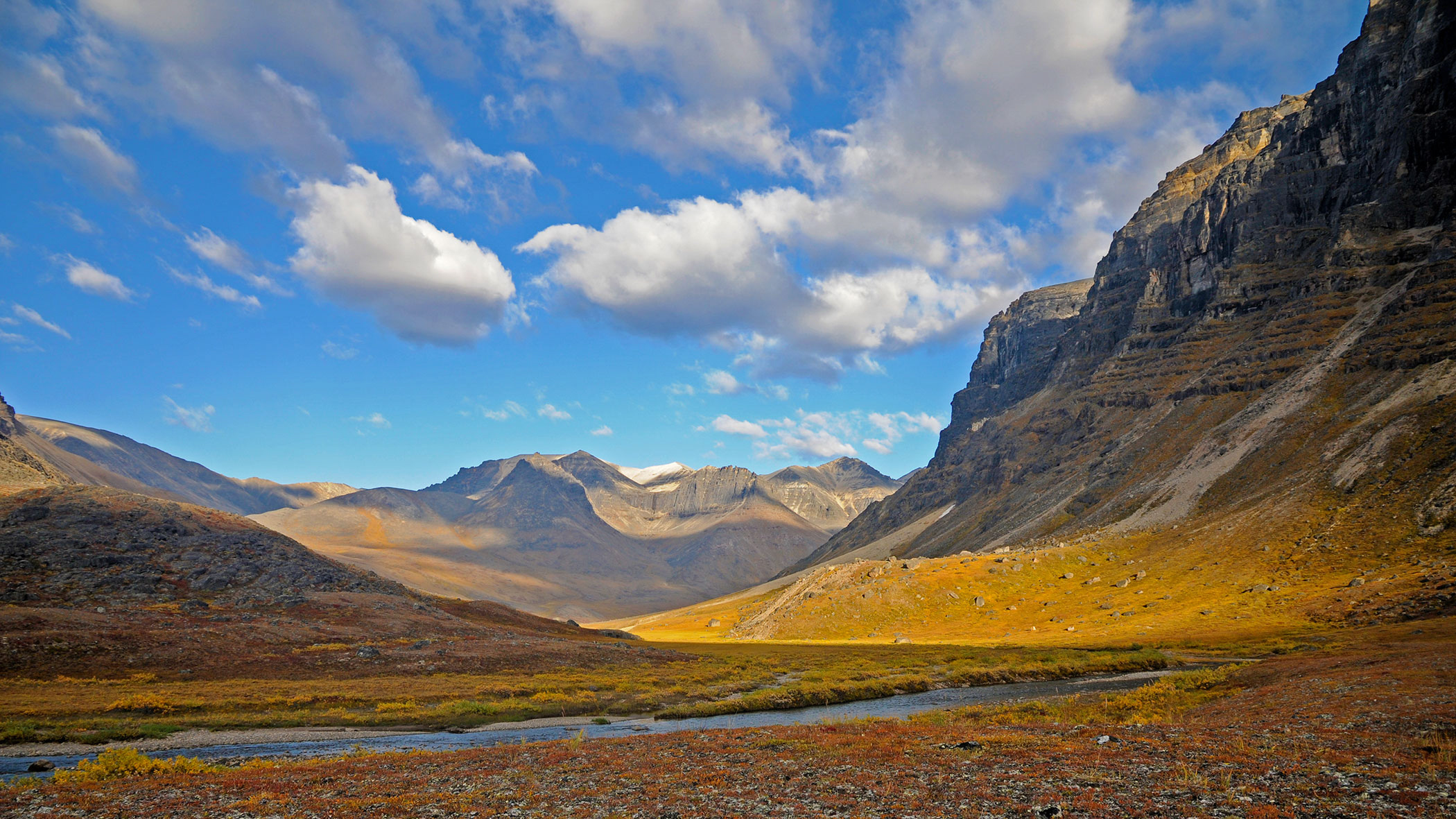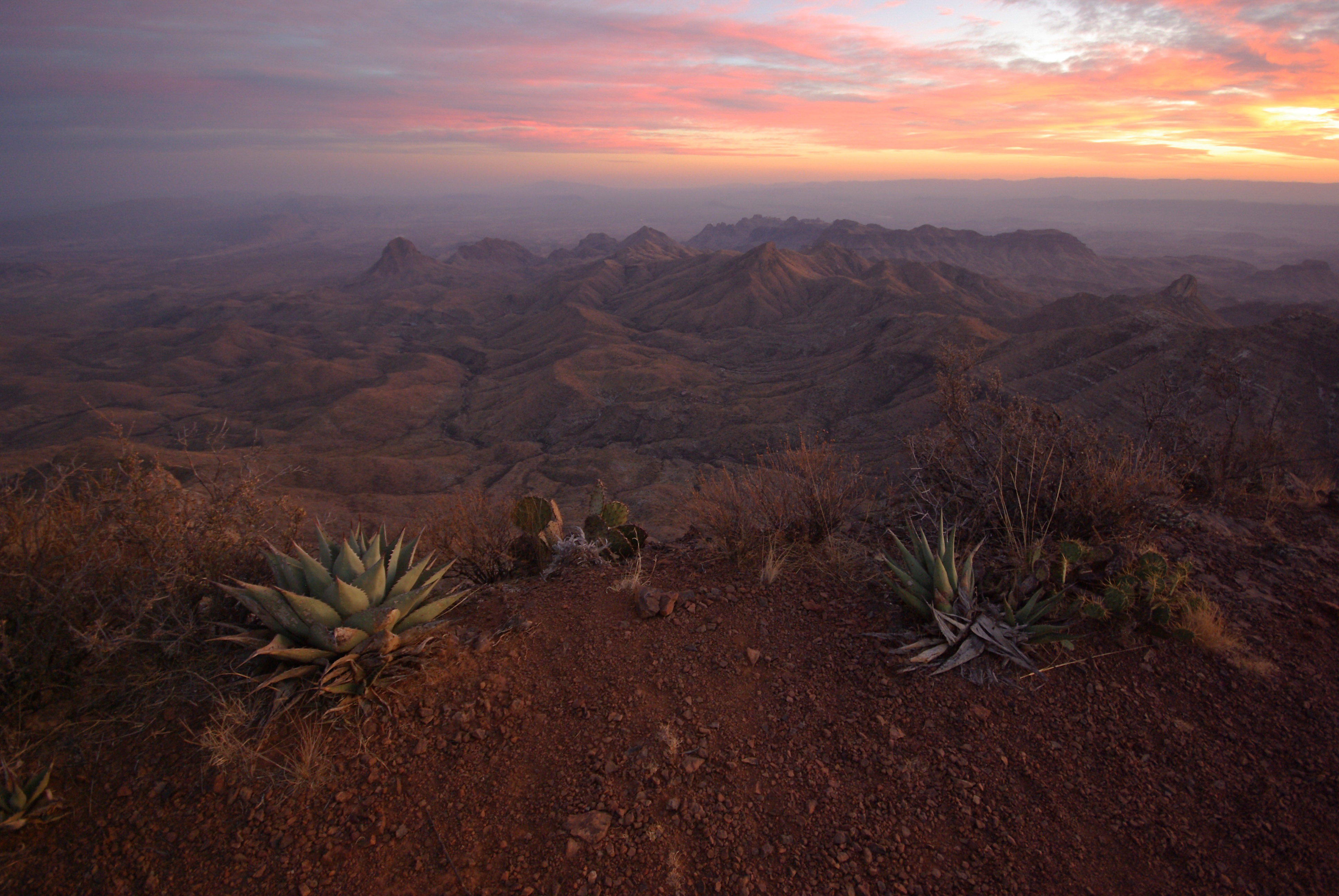America's best kept secrets: 20 unique national parks

Mason Cummings, The Wilderness Society
America is blessed with a national park system that protects some of our most beautiful and unique landscapes.
Our national parks are treasures for people of all ages. More than that, the national parks contribute greatly to the economic livelihood of nearby communities.
As part of our mission, we hope to inspire people to care about and stand up for national parks.
With that in mind, we hope you'll find these 20 unique national parks as inspirational as we do:
1. Biscayne National Park, Florida
At the north end of the Florida Keys not too far from Miami, is a national park with four marine ecosystems - mangrove forest, the Bay, the Keys and coral reefs - that provide habitat for a diversity of wildlife, including threatened animals like the West Indian Manatee, American crocodile, sea turtles and peregrine falcon.
In addition to wildlife watching, including snorkeling, visitors can boat, camp or fish.
The Maritime Heritage Trail is the only underwater archaeological trail in the National Park System, just part of this place's catalog of the history of people who have resided here for the past 10,000 years.
2. Haleakala National Park, Hawaii
Maui's large volcanic crater known as Haleakalā is a place of legend. The point called Pōhaku Pālaha is sacred to Native Hawaiians, for whom this place remains "wao akua," or the wilderness of the gods. Rainforests provide refuge for many native Hawaiian plants and animals that exist nowhere else on the planet.
The Kīpahulu Biological Reserve is so wild and precious that there is very limited access. This National Park has more endangered species than any other, as well as world-class night skies for watching planets, stars and moons.
Visitors are welcome to camp under them, as well as to hike, backpack and swim in this breathtaking paradise.
3. Gates of the Arctic National Park, Alaska

Credit: Zak Richter, National Park Service.
This national park is the farthest north, protecting a section of Alaska's Brooks Range, where people have lived for more than 13,000 years.
Thousands of archeological sites demonstrate the strong ties between this land and its inhabitants, which today include Athapaskan and Inupiat descendants. The land remains pristine, especially since there are no facilities, roads or trails.
But that shouldn't keep you from visiting. After all, arctic terns fly all the way from Antarctic waters to arrive here every year, the longest migration of any bird in the world. Those who join the tern will spy countless other birds and wildlife as they backpack, hike, camp and cruise the rivers.
4. Mammoth Cave National Park, Kentucky
Well deserving of its name, Mammoth Cave National Park is by far the world's longest cave system, with 400 miles mapped underground.
Treasures inside include gigantic cave formations ("niagara falls" pictured above), as well as 300-million-year-old fossils and perfectly preserved artifacts from natives who gathered minerals here 2,000 to 4,000 years ago. In addition to spelunking, visitors can explore 70 forested miles above ground by foot, bike or horse.
The Green River winds through these lands as well, offering additional opportunities for boating, fishing and swimming.
5. Hot Springs National Park, Arkansas
These natural hot springs have attracted visitors for centuries, causing a town to be created around them in the 1800s.
Today it is the smallest National Park and the only one in an urban area. Its baths are managed for public use and also showcase the history of this practice.
With 26 miles of trails, bathers can also hike or camp, or go for a relaxing scenic mountain drive.
6. Channel Islands National Park, California
Five of the eight Channel Islands and their surrounding waters are managed by the National Park Service, protecting this unique coastal Mediterranean ecosystem. Sometimes referred to as the "North American Galapagos", there are 145 animals and plants totally unique to this area, like the island fox.
These islands are also home to the largest breeding colonies of seabirds in the region, as well as the oldest dated human remains on the continent.
Painted Cave on Santa Cruz Island is one of the world’s largest known sea caves, with a length greater than four football fields.
Nature lovers can choose from a plethora of outdoor recreation activities, including hiking, camping, snorkeling, fishing, surfing, as well as viewing birds, seals, sea lions and whales.
7. Congaree National Park, South Carolina
Originally a national monument, this area became a International Biosphere Reserve and a Globally Important Bird Area before being designated as a National Park, the first and only in its state.
Congaree National Park is primarily distinct because it is the largest tract of old-growth floodplain forest remaining in North America, and some of its trees are the tallest on its side of the continent. The Boardwalk Loop is an elevated walkway for visitors venturing through its swamps.
Other fun activities here include hiking, camping, wildlife viewing, canoeing and kayaking.
8. Capitol Reef National Park, Utah
Capitol Reef National Park features the stunning Waterpocket Fold, a 100-mile geologic monocline, which is like a wrinkle on the Earth that reveals its geologic layers.
Other natural features are monoliths, sandstone domes, cliffs, canyons and bridges. In addition to its biological soil crusts, black boulders, stromatolite fossils, and tracks from the triassic era, this wild place has some of the best night sky viewing of all of the western national parks.
Camping, hiking, backpacking, rock climbing, biking, horseback riding and scenic drives offer visitors all sorts of outdoor play.
9. Big Bend National Park, Texas

Credit: Chet Williams, flickr.
They say everything in Texas is larger than average, and this place is no exception. Where the Rio Grande River makes its wide turn through the Chihuahuan Desert, a whole host of delight is revealed.
This is a world-class geological area, with laccoliths, faults, volcanoes and remarkable fossils - including a world-record pterosaur and 50-foot crocodile. Ten-thousand-year-old archeological sites reveal a unique cultural history, and a diversity of wildlife make these wild lands a birder's paradise.
Visitors can hike, fish, ride horseback, boat, go for a scenic drive, take a dip in a natural hot spring, or just lay back and take a marvelous gander at beautifully clear night skies - perhaps even seeing as far as two million light years away to the Andromeda galaxy!
10. Petrified Forest National Park, Arizona
In the Painted Desert of Arizona, there is a collection of 225-million-year-old petrified wood that has become almost solid quartz. This section of the Chinle geological formation is known scientifically for its globally significant Late Triassic fossils.
There are also over 350 Native American sites recording more than 13,000 years of human history and culture, as well as one of the most diverse collections of prehistoric pottery fragments in the Southwest.
Over 52,000 acres of designated Wilderness provide spacious wild lands for hiking, backpacking, horseback riding and even geocaching.
11. Great Sand Dunes National Park, Colorado
Sand deposits of the Rio Grande have sculpted the tallest dunes in North America here, which rise up to 750 feet. Surrounding grasslands, shrublands, wetlands, alpine lakes, high mountains and ancient forests make this park one of the most biologically and geologically diverse in the U.S.
Visitors often arrive in spring or fall as sand surfaces can reach 150 degrees Fahrenheit on a summer afternoon, or drop to 20 degrees below zero on a winter night.
In spring, Medano Creek offers beach activities like wading, skimboarding, tubing and sand sculpting. In addition to the popular sandboarding and sand sledding, there are also abundant opportunities for hiking, backpacking, photography, astronomy, camping and horseback riding.
12. Great Basin National Park, Nevada
The diversity of Great Basin National Park's treasures is remarkable, evidenced by its 13,000-foot Wheeler Peak, 5,000-year-old bristlecone pine trees, limestone Lehman Caves as well as some of the country's darkest night skies.
But that's not all. There are deserts, playas, rock formations, fossils, springs, creeks and even a glacier. Since Great Basin mountains are isolated by surrounding deserts, some plants and animals found here are unique to the area.
Visitors are welcome to explore opportunities for scenic drives, biking, camping, climbing, fishing, hiking, backpacking, horseback riding and even gathering pine nuts.
13. Crater Lake National Park, Oregon
Over 7,000 years ago, a volcanic eruption created Mount Mazama, within which today nests Crater Lake, the deepest lake in the country (almost 2,000 feet). Two islands in the center contribute to this picturesque scene of beautiful blue, crystal-clear waters.
Winter access is limited due to snow, but many still enjoy this wild land by snowshoe, cross-country skiing, or snowmobiling. In the summer, hiking, boating, swimming, fishing and camping keeps visitors delighted.
14. Olympic National Park, Washington
Olympic is several magnificent parks inside one. Nearly one million-acres, 95% of which is designated Wilderness, it contains some of the largest remnants of ancient forests left in the country. Its temperate rainforests make it the wettest area of the continental U.S.
Stretching down 73 miles of Pacific coast, it also hosts tidepools, sandy beaches and rocky cliffs. And Olympic Mountain glaciers make up a significant part of the most glaciated area of the lower 48 states. These relatively intact ecosystems make this place priceless habitat for all sorts of wildlife.
Hiking, skiing, scenic drives, biking, backpacking, camping, fishing, bird watching and beach strolling await those looking for incredible adventures.
15. Death Valley National Park, California and Nevada
The lowest and driest place in the United States, Death Valley is a place of extremes. High snowy mountains contrast with scorching deserts with daytime temperatures up to 130 degrees Fahrenheit.
Known for intense drought, periodic rains support many lifeforms despite its name. There are also canyons, colorful badlands, sand dunes, salt flats, springs and buttes.
Backcountry adventures are popular here, as well as biking and birdwatching. As the largest national park in the contiguous U.S., the possibilities here are truly endless.
16. Dry Tortugas National Park, Florida
At the farthest end of the Florida Keys is the third-largest barrier reef system outside of Australia and Belize. Accessible only by boat or seaplane, the 100-square-mile park is primarily open, blue water, with an abundance of marine life living in and around its seven small islands.
Fort Jefferson, once a remote prison facility, remains the largest masonry structure in the Western Hemisphere. Visitors can spy shipwrecks under seas as well as a plethora of birds in the sky.
17. Everglades National Park, Florida
At 1.5 million acres in size, Everglades is the largest subtropical wilderness in the United States.
This mangrove ecosystem and marine estuary marks a significant edge of the northern limits of many subtropical plants and the southern limits of many temperate plants. It is home to 36 protected species, including the Florida panther, American crocodile, and West Indian manatee.
Many visitors come to view its rare wildlife, including 350 documented species of birds. Boating, hiking, camping and biking are also popular activities.
18. Hawaii Volcanoes National Park, Hawaii
Kīlauea and Mauna Loa are two of the world's most active volcanoes. Kīlauea Volcano has erupted almost continuously since 1983, adding about 500 acres of new land to the island's southern shore.
This park is also one of the most fascinating biologically because it sits at the southeastern edge of the youngest and largest island of the geographically isolated Hawaiian archipelago.
Varied elevation contributes to a wide diversity of habitat for many species including native carnivorous caterpillars and endangered Hawksbill sea turtles.
Those who come to see the lava flows can also take a hike, bike ride, leisurely drive and camp overnight.
19. Sequoia National Park, California
This giant forest contains the world's largest tree named General Sherman, the tallest mountain in the continental U.S. (Mount Whitney), over 240 marble caverns and the granite dome Moro Rock.
It borders Kings Canyon National Park, which together encompass hundreds of thousands of pristine acres, of which more than 90% is designated Wilderness.
One of the most extensive stands of old-growth coniferous forest remaining in the world, these parks protect nearly half the remaining sequoia groves in the world.
Scenic drives, campgrounds, rock climbing and winter sports attract many visitors year-round. Rivers can be hazardous for swimming or boating, but fishing is permitted.
20. Mesa Verde National Park, Colorado
Mesa Verde was the first national park meant to "preserve the works of man."
There are 5,000 known archeological sites, some of the most notable and well preserved in the U.S. It is best known for its 600 cliff dwellings, some of which have up to 150 rooms. Ancestral Puebloans took advantage of the diverse geology of the area, such as seep springs and alcoves, to create a sustainable, advanced lifestyle in the 12th and 13th centuries.
Tours offer details on these lives, and trails provide opportunities for hiking and snowshoeing. The 360-degree panoramic view at Park Point is one of the most breathtaking in the country.
